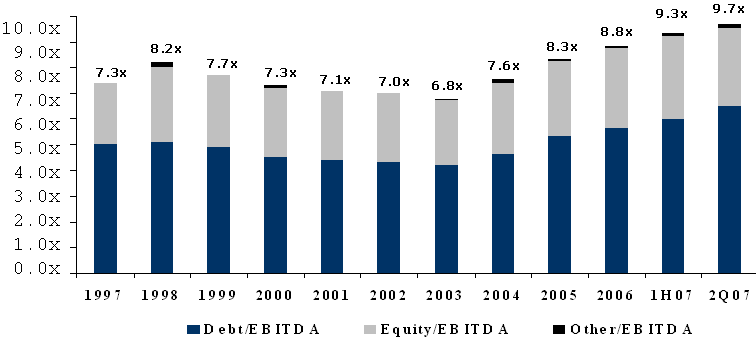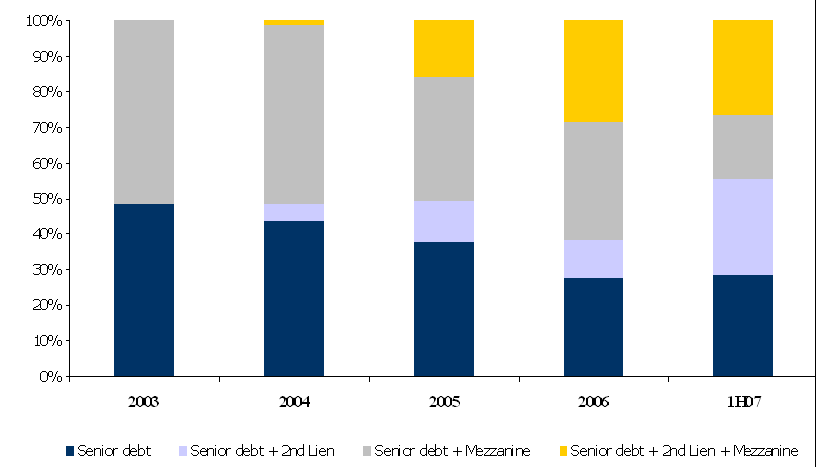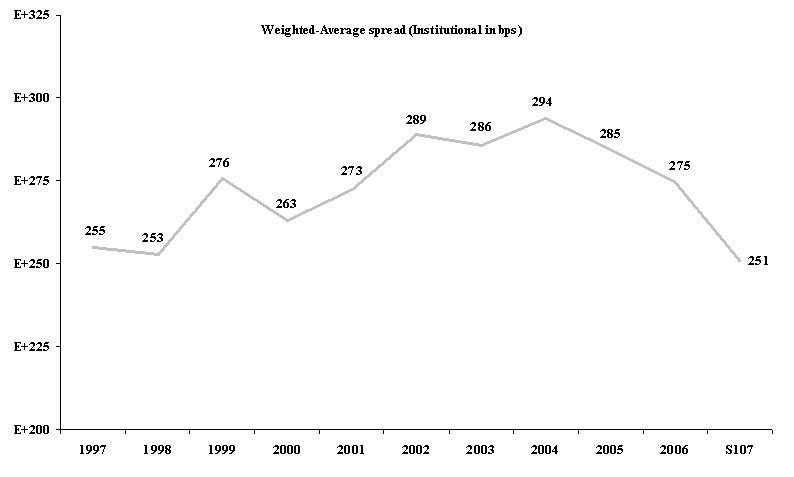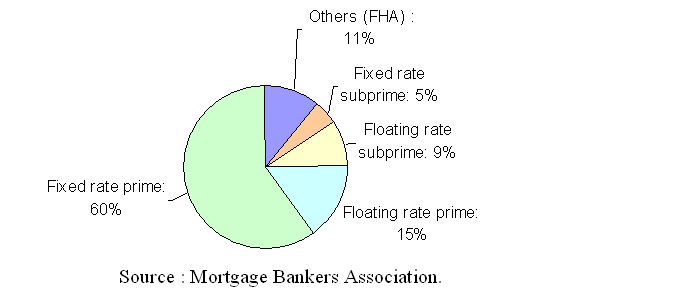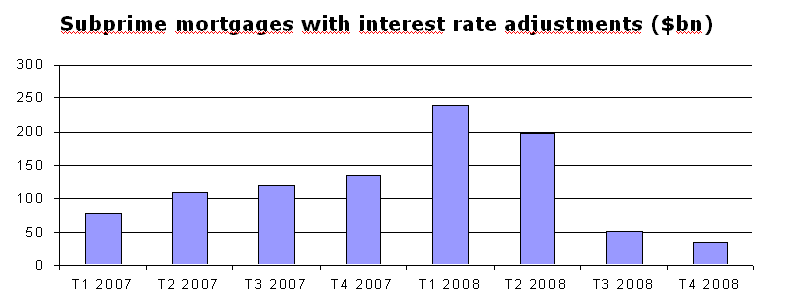Letter number 28 of November 2007
ALL ARTICLES
- TOPIC
- STATISTICS
- RESEARCH
- QUESTIONS & COMMENTS
News : Behavioural finance
The sole aim of this article is to take a brief look at a field in the area of financial research, behavioural finance. In 2002, the Nobel Prize for Economics was awarded to two economists who have made a major contribution to this theory, Daniel Kahneman and Vernon Smith. We thought it might appear a bit cavalier on our part to attempt to give a full overview of the subject. Readers wanting a more in-depth and fuller explanation are invited to visit the very comprehensive website http://www.behaviouralfinance.net (1).
1/ Market anomalies: stumbling stones or lightning conductors?
Modern finance is based largely on the assumption that investors are rational people. This assumption has been very useful for simplifying the facts and designing models that have evolved, especially during the 20 years between 1950 and 1970, when IT capacities were far below what they are today. This assumed rationality of all of the players on the market gives rise to the theory of market efficiency. Efficient markets are generally defined as markets on which it is possible for resources to be allocated exactly where and when they are needed and at a lower cost. From a more micro-economic point of view, the informational efficiency of markets has been formulated by Eugène Fama as follows: changes in share prices do not depend on previous prices (low efficiency). All relevant information is taken into account in the formation of prices (semi-strong efficiency) and those holding private information cannot take advantage of it (strong efficiency (2)).
A whole slew of financial research since the 1960s consisted in testing the efficiency of markets, probably the most tested hypothesis in finance. Some observations contradict market efficiency. The following anomalies have been noted:
• Excessive volatility: Common sense lies at the base of the first challenge to market efficiency. How can markets be so volatile? New information on say Google does not arrive every second, yet its share price changes from one minute to the next. There would seem to be a "noise" effect that impacts on the basic value of the share.
• Dual listed stocks and closed-end fund securities: Dual listed stocks are shares in twin companies that are listed on two different markets (3), with identical dividend payments. Nevertheless, the prices of the two stocks may differ over a long period.
Similarly, the value of closed-end fund securities (made up only of listed stocks) can be listed over a long period at a discount or a premium to net asset value. Standard discounts applied to conglomerates (4) do not explain the size of the discount on certain funds, and even less so the premiums on others! It is interesting to note that these premiums or discounts compared to the intrinsic value can last over the long term, which explains why arbitrage (something simple to implement) becomes complex for any investor that does not have a very long-term investment period.
Calendar effect: Certain studies highlight the fact that returns on financial securities may depend on the day of the week or the month in the year. Stocks seem to perform less well on Mondays than on other days, and returns in January are higher than in other months (this phenomenon is especially true for smaller firms). For each of these observations, reasons that are backed by investor rationality are put forward (5). Nevertheless, it does appear that the anomalies are not clear enough for profitable arbitrage to be carried out, given the amount of transaction costs.
Weather anomaly: It has been noted that returns on shares are higher when the weather is fine than when it rains (6). But here again, although the statistics of these observations are significant, they are not a sufficient basis for arbitrage.
Accordingly, there would appear to be a body of evidence that implies that the theory of efficient markets is invalid. Eugène Fama, the high priest of efficient markets, defends the theory doggedly. For him, the observation of anomalies can largely be explained by the methodology used. Fama especially challenges observations of systematic over- or under-reactions of markets noted by other economists. Nevertheless, some economists have arrived at the conclusion that markets are (even partially) inefficient.
If we do arrive at the conclusion that the theory of efficient markets is invalid, it then becomes necessary (i) to understand what it was in the initial modelling that did not correspond to reality (ii) and to attempt to develop a new modelling of investor behaviour that is closer to reality.
2/ Investor behaviour
And what if the initial assumption underlying modern theory was a false assumption: are investors really rational (ie, do they act in a consistent manner in order to maximise returns)? Behavioural finance uses an innovative method for testing this assumption. Experiments have been carried out in order to determine the real behaviour of investors faced with a choice.
The results of certain psychological experiments (even though not directly linked to economic choices) can be applied to finance. For example, tests seem to prove that individuals answer questions put to them by making mental associations or taking short cuts (7): a number between 0 and 100 is chosen at random in front of a sample of people who are then asked to guess whether the number of African countries is higher or lower than the number drawn, and then to guess how many countries there actually are in Africa. It is interesting to note that the average number of countries given by people in the different samples to the last question, depends on the initial number drawn. This example demonstrates the fact that investor decisions can be influenced (independently of fundamental choices to be made)…
A typology of experiments that is also used to appreciate the attitude of investors to financial products, involves giving a sample of individuals a choice between several lotteries (the gains on which are associated with probabilities), with or without a financial risk. Here we see a direct link with psychology. The field of behavioural finance has in fact been developed by financiers and psychologists in tandem. The results of these studies undermine some of the basic assumptions of investor rationality. The following behaviours can be cited:
• Investors do not make the same choices for gains and for losses. They prefer taking risks when there is a strong probability of loss (a probability of 50% of losing 100 rather than the certainty of losing 50), but they prefer to plumb for a lower gain when the probability is high (certainty of gaining 50 rather than having one chance in two of gaining 100).
• If the probability gap is narrow, individuals will choose the lottery offering the highest possibility of gain, but if there is a wide probability gap, they will take a close look at the expected gain. This generates a number of paradoxes. It is possible to prefer A to B and B to C, but to prefer C to A. For a financier, this means preferring BNP Paribas to Fortis, Fortis to Mediobanca but Mediobanca to BNP Paribas! This observation is the sort of thing that can drive an asset manager crazy!
3/ Impact on the market
The irrationality of some investors does not really present a problem if the anomalies can be quickly corrected by arbitrage and if there is a rapid return to efficiency. Additionally, the presence of irrational investors among market players does not necessarily mean that markets are inefficient, especially if the trades made by these investors set each other off, or if rational investors can use arbitrage to bring about a return to balanced prices.
Nevertheless, some of the anomalies we’ve looked at (dual listing, closed-ended funds) last over the long term, which is proof that the inefficiency of markets cannot systematically be corrected by arbitrage. Some even seem to prove that the market systematically over- (or under-) reacts to some information. The super-performance of a share (or a portfolio) tends to follow on an under-performance, and vice-versa.
4/ Implications
It's very easy to criticise, but a lot harder to come up with something better. What is important is that we don’t throw out the baby with the bathwater, by exploding the theory of markets in equilibrium, with all the consequences that that would entail (no more CAPM, impossible to value financial products). What we need are suggestions for a new framework for finance. Existing models put forward by economists are, in our view, of limited use in their current state (especially for corporate finance). They focus on the first line of reasoning: model the behaviour of investors in order to determine whether they get anything useful out of it and to identify how they understand financial products. This is just the first step in the reconstruction of a model, which goes as far as the valuation of shares. So, we’re not quite there yet. But Rome wasn’t built in a day and we’ll keep a close eye on developments in the field of behavioural finance, waiting with some impatience for the direct applications thereof to corporate finance.
In some ways, behavioural finance is battering on open doors. Investors are human beings, not computers, and are thus sensitive and irrational, and that’s the way it should be. Can we model irrationality without making it dissappear? And if behavioural finance manages to do that, won’t it be a sort of Pyrrhic victory?
But while we wait, we’d like to draw a quick parallel with physics. The theory of gravity remains valid, even though it has been proved to be defective at both the macro and micro level, by the theory of relativity and quantum theory. So we’ll just soldier on for another few years with the theory of markets in equilibrium as our guide, at the risk of appearing old-fashioned, but our rational opinion is that this is a risk worth taking!
(1) This site provides a very comprehensive list of all of the research on the subject and includes a large number of articles.
(2) For further information see chapter 15 of the Vernimmen.
(3) We’d happily simplify the mechanism, but those are the economics. Royal Dutch Shell until 2005, Reed Elsevier, Unilever, ….
(4) See page chapter 41 of the Vernimmen.
(5) Chan and Singal, Role of Speculative Short-term Sales in the Price Formation : The Case of the Week-end Effect, Journal of Finance, April 2003.
(6) See Hirshleifer, Shumway Good day Sunshine : stock returns and the weather, Journal of Finance, June 2003.
(7) Tversky and Kahneman, 1974.
Statistics : D / EBITDA ratios for LBOs
In recent years and up until the recent crisis, liquidity in the market was so high that financing conditions for LBO transactions kept on sweetening. The charts below (source : Standard & Poor’s) show that from 2003 until mid on 2007:
• Acquisition multiples have increased mainly thanks to increasing debt/EBITDA leverage in transactions,
• Financing structures have been refined to include secon lien which provided financing at better conditions than mezzanine,
• Overall financing spread on loans have decreased.
For more on LBO’s, see chapter 44 of the Vernimmen, and Vernimmen.com Newsletters n°13,
14 and 25.
Research : How are firms sold ?
There are two opposing theories underlying the way in which firms are sold.
The first, based on agency models, assumes that the value of firms sold by open bid will increase by more than those sold following private negotiations between the managers of the firms in question. Depending on the way the wind's blowing, the managers of the target company could use tools to protect the firm against hostile takeover bids (poison pills) and will seek to negotiate terms and conditions that are in their own interests, at the expense of shareholders.
The second is the theory of informational costs, which suggests that the choice between a sale by bidding process or through negotiation should be based on a compromise between:
• the competitive advantages of a bidding process;
• the drawbacks of having to reveal information on the target company to competing firms
A recent article by Boone and Mulherin (2007) (1) covers an empirical study that supports the second theory. They looked at the consequences of the choice between a bidding process and negotiations between the managers of target firms on the increase in the market value of the latter. They rely on a sample of 400 US takeover bids announced during the 1990s, 202 of which were sold through an open bidding process and 198 following negotiations between managers.
The authors found a general out-performance of target firms (2) of 21.6%. In their initial analysis, they note that the out-performance of firms sold following private negotiation (20.5%) is not significantly different from those sold in a bidding process (22.7%). Since a number of criteria come into play in the choice between a bidding process and a private negotiation and since these same criteria are likely to influence out-performance (size of the company, payment method and whether the bid is hostile or not), the authors perform a regression on the out-performance of the target firms on these different criteria and show that:
• in line with expectations, a target firm will record a higher out-performance when it is relatively small, when the acquisition is paid in cash and when the takeover bid is hostile;
• in line with informational theory, and contrary to predictions of agency models, the choice between a bidding process and private negotiations will not impact on out-performance
Two conclusions can be drawn from this study. Firstly, managers of target firms that choose a single buyer following a negotiation process do so for information optimisation purposes more often than for opportunistic reasons. Secondly, if we are to believe the results of the authors, the introduction of a law that would encourage one method of selling a firm over another, would serve no useful purpose (3) .
(1) A.L. Boone and J.H. Mulherin (2007), How are firms sold?, The Journal of Finance, Vol. 62, n°2.
(2) Defined here as the difference between the market performance relative to the CRSP index the day before and the day after the announcement of the offer to buy the target.
(3) For more on how to sold a company, see chapter 42 of the Vernimmen.
Q&A : What is a subprime loan?
Real estate debt in the USA currently stands at around $10,000bn, which is three-quarters of GDP. This debt is divided into several categories, depending on the solvency of the borrower (we talk about prime and subprime, and also near prime or Alt-A borrowers) and whether the interest rate is fixed or floating.
Very few prime households, which account for close to 40% of US households have defaulted on their mortgage repayments. Most subprime households, however, which account for around 15% of US households have defaulted on more than one occasion. The rest (45%) is a sort of morass of near prime or Alt-A borrowers, which covers borrowers with no proof of a stable income or with an average credit record.
The volume of subprime loans granted in the USA is around $1,300bn, or 13% of all mortgages. They are mainly granted at a floating rate (65% compared with 35% at a fixed rate), while only 20% of prime loans are issued at a floating rate.
The increase in the number of subprime loans issued has enabled a large number of US households to buy their own homes. Over the last 10 years, the rate of homeownership has risen from 65% to 69%, and more than half of this gain is due to subprime buyers.
Lenders generally earn around 2% more on subprime loans than on standard mortgages, which explains why around two-thirds of these loans were acquired directly or indirectly via RMBS (Residential Mortgage Backed Securities) by investors seeking higher returns, some of whom had obviously forgotten the golden rule in finance – a higher return equals a higher risk.
Many subprime mortgages were granted over the last two to three years at initially low, fixed interest rates, which rise contractually after two to three years. A growing number of US subprime households now find in 2007, and this will continue into 2008, that their monthly mortgage repayments have increased dramatically (by 30% and more):
So, it is hardly surprising that the percentage of subprime mortgages on which borrowers are unable to meet their mortgage repayments – and whose homes are being repossessed by mortgage lenders is rising exponentially – 4% in 2006, 6% in 2007 and an estimated 10% in 2008.
